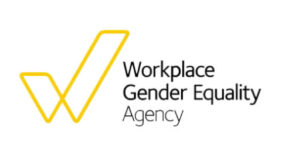oOh!media has released findings from the Workplace Gender Equality Agency (WGEA) which reports women at Australia’s leading Out of Home media company are on average paid more than men.
 Benchmarked against the industry sector, where men are paid on average +14.6% more than women according to WGEA data, oOh! has achieved an average (mean) total gender pay gap remuneration of negative 2.2%*.
Benchmarked against the industry sector, where men are paid on average +14.6% more than women according to WGEA data, oOh! has achieved an average (mean) total gender pay gap remuneration of negative 2.2%*.
Median total remuneration was -15.7% compared to the industry’s +13.3% and median base salary stands at – 9.9%, compared to the industry’s +10.7%.
A positive percentage indicates men are paid more on average than women. A negative percentage indicates women are paid more on average than men.
For the first time, WGEA – a statutory Australian Government agency – is publishing the gender pay gaps for every Australian employer with 100 or more employees, with the intention to close the gender pay gap. In 2023 this gap was 21.7% – meaning women earn on average, $26,393 less than men a year.
Women comprise 48% of oOh!’s more than 800 strong workforce and 50% of senior leadership. The company has an ambition for women to make up 50% of the total workforce by 2026.
oOh! chief executive officer Cathy O’Connor, one of just 22% female CEOs in Australia according to WGEA analysis, said: “oOh! strives to maintain an industry leading position in Diversity, Equity and Inclusion (DEI). Beyond this result, we remain focussed on driving positive change for women, which will continue to support our position on gender pay equity.”
oOh! has implemented several key initiatives to address gender equity. These include additional gender pay equity analysis for the Board, its sub committees and CEO annually. oOh! has put measures in place to reduce bias in performance reviews, promotion processes and recruitment. Additionally, targeted individual development plans for women have been established and investment made in industry programs such as NGEN and Future Women. oOh! also offers competitive paid parental leave policies and incentives to retain and support the return of women to work; improved representation of women in people leadership roles and succession planning for senior positions; greater representation of women and their pay positioning in non-traditional roles; and flexible shift work arrangements for women in operations teams.
O’Connor added: “One of the drivers of this positive result is oOh!’s salesforce, which is traditionally a male-led profession. We have strong female representation in this part of our business, and as someone who started and built their career in media sales, I understand there’s so much opportunity for women to grow and develop in this space. We have seen just how women are bringing in revenue and driving strong pay outcomes, and it is important for businesses to mentor and support this talent.”
Parental leave results for the WGEA reporting period of 1 April 2022 to 31 March 2023 show an exceptional return to work rate of 100% for women in oOh! sales teams and a companywide rate of 99%.
O’Connor concluded: “The release of more detailed WGEA gender pay gap data at a company level represents a welcome addition to Australia’s reporting environment, marking an important milestone for Australian organisations in closing the pay gap for women.
“oOh! is committed to becoming a visible champion for gender equality and ensuring our workplace reflects the rich diversity of the communities in which we operate. While we have an inclusive culture that supports this, we recognise more can always be done to ensure diversity, equity and inclusion across all areas of our business.”
* oOh!media’s 2022-2023 gender pay gap data calculation does not include CEO salary data. CEO and Executive salary data has not previously been mandatory for WGEA annual reporting. From April 2024 employers must provide additional information on employees including age, primary workplace location and CEO remuneration.




Follow DailyDOOH